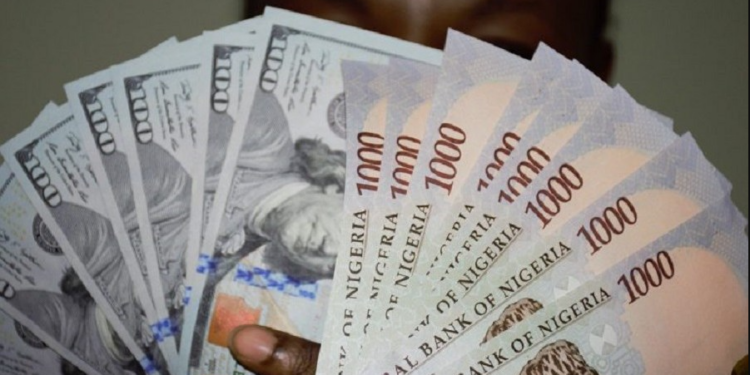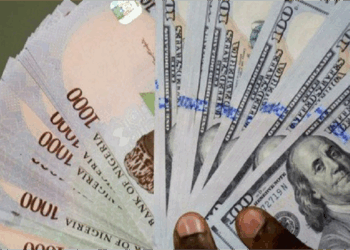The Nigerian currency hit a multi-weekly low this week, demonstrating that CBN’s intervention and attractive fixed-income yields have not stopped the naira’s decline.
The Nigerian currency lost the N1,650/$ support line at the last trading session of the week
Data from the Nigerian Autonomous Foreign Exchange Market (NAFEM) showed the naira closed at N1652.25/$1. after settling at N1,650.20/$1 on Thursday
At the unofficial section of the forex market, the naira was at its worst state, sellers exchanged in 1750/$1 on Friday
The naira value has dropped by 70% since mid-last year while the American dollar index showed strength
This month, the naira saw weak performance in all segments, despite the nation’s foreign exchange reserves reaching multi-month highs.
The foreign reserves of the CBN increased to $40 billion, the highest level in 32 months.
The local currency is expected to weaken to N1,993/$ by 2028 according to a recent analysis by BMI, a division of Fitch Solutions.
Nigeria’s economy is anticipated to rebound in 2025 with a projected growth rate of 3 per cent in 2024, up from 2 per cent in 2023.
However, Nigeria’s foreign exchange market has suffered due to enduring problems like tepid oil production, high inflation, stricter monetary policies, and low foreign direct investment.
In addition to limited dollar inflows and slow foreign exchange disbursements to currency exchange bureaus by the central bank, the naira’s decline can be explained by surges in demand for US dollars in the parallel market, which are driven by financial institutions, money managers, and non-financial end users.
The naira’s rapid decline has resulted in increased import prices, which has deterred importers and decreased overall import volumes.
The total value of Nigeria’s merchandise imports for the 12 months ending in June 2024 was $45.5 billion, which was 20% less than the $57.1 billion for the same period ending in June 2023.
U.S dollar index 5-day winning streak takes a pause
- The naira outlook is bearish even as currency traders pull back USD bets on another December interest-rate cut by the US Federal Reserve (Fed).
- The US Dollar Index, which compares the strength of the US dollar to a basket of six other currencies, was unable to secure gains for a sixth day in a row during Friday’s tumultuous trading.
- Chair Jerome Powell stated during a press conference held in the wake of the Federal Reserve’s decision to cut interest rates by 25 basis points last week that the central bank’s “near term” decisions would not be impacted by the possible economic policies of the incoming Trump administration.
More insights
- The Fed chief caused market trepidation by voicing concerns about a December interest rate cut while they evaluated new Retail Sales data.
- Powell noted that it may be some time before officials have enough clarity to assess how Trump’s plans to cut taxes and impose harsh tariffs on US imports will affect their interest rate calibration, even though he acknowledged that they will be taken into consideration.
- Trump’s policies, particularly the blanket import taxes, have raised the odds for sticky inflation, which might make a case for the Fed to raise interest rates faster than expected.
- A conflict between the Fed and the new Trump administration could be made more likely by this increase in volatility,
Powell told reporters last week that he would not resign if asked to do so by the next administration, firmly rejecting the idea that Trump could fire him.
Powell would probably file a lawsuit against anyone who tried to remove him before the end of his term, according to the WSJ. In June, Trump stated that he would let Powell finish out his term “especially if I thought he was doing the right thing.” Since then, he has not made any indications of trying to remove Powell.
There is disagreement among Trump’s advisors regarding the appropriate course of action. In the meantime, any changes to the Fed’s composition could jeopardize policymakers’ current efforts to combat inflation without causing a collapse in the labor market or the overall economy.


























